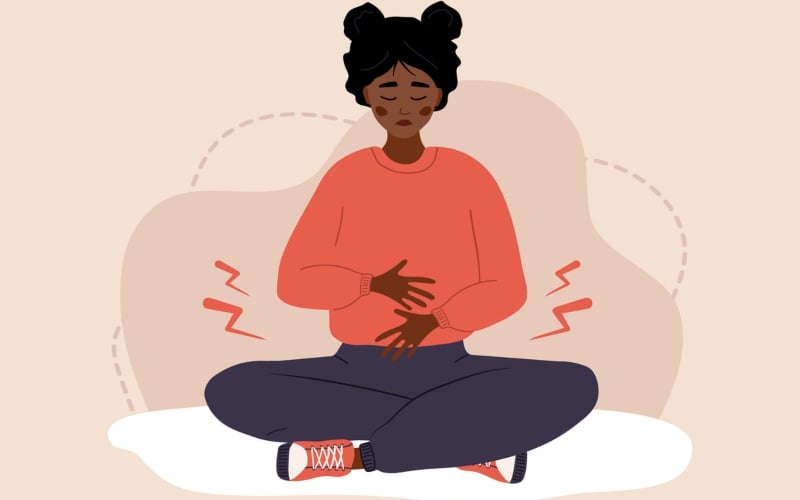By HARIKLIA NGUYEN
In this blog, researcher Sadia Janjua talks about a Cochrane Review in progress on measures people can take to reduce exposure to air pollution and Hariklia Nguyen, who contributed a personal perspective to the review protocol, writes about her recent experiences during the Australian bushfires and the need for this evidence.
Page updated 23 September 2021: This Cochrane Review, Individual‐level interventions to reduce personal exposure to outdoor air pollution and their effects on people with long‐term respiratory conditions, was published on 09 August 2021.
Cochrane author, Sadia:
Outdoor air pollution is major problem globally at the moment, and can cause and exacerbate health problems including heart disease and long-term breathing conditions. People who already have breathing problems such as asthma, Chronic Obstructive Pulmonary Disease (COPD) or Cystic Fibrosis are particularly affected.
We decided to write a systematic review on this topic after meeting a group of people from London with COPD. Several members of the group said that they changed their behaviour in response to high air pollution. This included avoiding busy roads, wearing a scarf across the mouth and nose, closing windows, and using air quality alert mobile phone apps. They wanted to know what the evidence was behind these behaviour changes that they were making. A few of the group members said that they were given advice by their health care professionals, but they wanted to know what evidence there was behind the advice.
Our new review Individual-level interventions to reduce personal exposure to outdoor air pollution and their effects on long-term respiratory conditions will look at the information that already exists from research studies about the effectiveness and safety of things that people with long-term breathing conditions can do to avoid air pollution (e.g. wear a mask, stay indoors, or use air pollution apps). We were fortunate to have Hariklia Nguyen who provided valuable input, as someone who lives with sarcoidosis, on our published protocol. A Cochrane Protocol is a plan for a full Cochrane Review. A Cochrane Protocol outlines the healthcare question that will be addressed, and describes the methods that will be used in the Cochrane Review. The information contained within a Cochrane Protocol will be included in the full Cochrane Review when it is completed.
The need for this information has been highlighted again with the recent bushfires affecting so many people in Australia, including Hariklia, as she explains here.
Cochrane Citizen Scientist Hariklia:
I experience the typical sarcoidosis symptoms such as episodes of a dry cough, flu like symptoms, sometimes shortness of breath and tiredness. I reside in Victoria, the Australian state, and I recently experienced the effects of the horrific bushfires that people around the world have seen on the news. This caused a long period of very dusty and smoky air in Melbourne, with air quality alternating from hazardous to very poor. It meant that anyone could experience symptoms like coughing or shortness of breath. This is quite rare or in my view unheard of. It was a really unpleasant experience which I’d like to share with you, and one that was made worse because of the practical difficulties of following some of the advice given – and a lack of evidence about what works!
Official advice was to stay indoors and keep windows and doors closed. This did affect me as I had a period of coughing, breathing difficulties and sneezing. I had many thoughts about this information. How would I know if the air quality inside my home was already affected by the poor outdoor air quality? Am I safe in my own home?
Following advice can be difficult
It did not take long to realise that finding apps that monitor indoor air quality was difficult. During my search for mobile apps the free apps I managed to locate were ones linked with a separate portable air quality device you can purchase for your home which are costly. I tried other apps that could monitor outdoor pollution (apps that can monitor air quality where you live to ensure the information will be more accurate) hoping they had the capability to monitor the indoor air quality too but unfortunately, they didn’t. Eventually I gave up because it took time to download the apps on my mobile device and try them! Furthermore, some required that you register or sign in to use them which I found unappealing.
Tips on reducing exposure to air pollution are not always practical
The other advice also was to switch air-conditioners to recirculate if using them indoors and if your unit doesn’t have that function, to turn it off. However, during this time of the bush fires we were experiencing hot and humid days and so staying in the house without the air conditioner switched on was almost impossible. The advice included giving consideration to going to an air-conditioned building like a library or shopping centre for a break if safe to do so. If I could be sure the air quality in my home is poor, then it may help to make a decision to take the risk to leave home which would expose me to outdoor hazardous air (even though for a short period) while going to a place where the indoor quality may be better. Unfortunately, you cannot always leave your house and go somewhere else especially for long periods of time. These tips were not always practical during the summer or heat period!
Advice can cause confusion
My community was further advised to wear masks but at the same time it was not known if they were effective! I am sure this caused confusion among the community. Apparently, there was also a shortage of these masks which the country was unprepared for. Indeed, Guy Marks from the University of New South Wales is putting together an expert Australian team to research poor air quality, the effects and what could prevent exposure in these situations. He comments “Are masks even that effective? What about air filtration? Or staying indoors. We’re not sure that any of that is right, but they’re all testable questions.”
We need evidence-based answers to questions!
I agree! As a community member I would like the answers to all of these questions! This also relates to the key question in the new Cochrane Review – Individual-level interventions to reduce personal exposure to outdoor air pollution and their effects on long-term respiratory conditions: what can individuals do, especially those with long-term breathing conditions, to reduce their exposure to air pollution?
Sadia:
We are hoping that our review will find out what evidence there is behind advice given to people with respiratory conditions when air pollution is poor, and whether what they are doing to reduce their exposure to air pollution is effective in improving their health.
Take-home points
- Outdoor air pollution can cause or exacerbate health problems, including heart disease and long-term breathing conditions such as asthma.
- Advice given to people about things they can do to reduce their exposure to air pollution may not be evidence-based.
- A Cochrane Review is in progress looking at the effectiveness and safety of things individuals can do to reduce their exposure to air pollution.
—
This post was previously published on evidentlycochrane.net and under a Creative Commons license CC BY-ND 4.0.
***

If you believe in the work we are doing here at The Good Men Project and want a deeper connection with our community, please join us as a Premium Member today.
Premium Members get to view The Good Men Project with NO ADS. Need more info? A complete list of benefits is here.
—
Photo credit: iStockPhoto.com
The post Outdoor Air Pollution: Determining Individual-level Actions To Reduce Exposure appeared first on The Good Men Project.
Original Article










